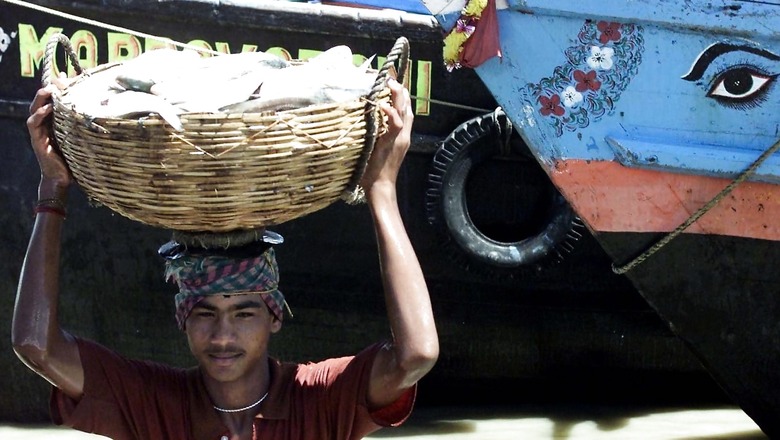
views
Hilsa, or Illish, a freshwater fish native to the Bay of Bengal, continues to be elusive to the Bengali commoner. The fish has made a mark in Bengali history, scriptures, and literature too. Now, however, fishermen have been coming across hilsas with ‘marks’ on them. The reason behind this lies at a research institute.
The Central Inland Fisheries Research Institute has emphasized on the conservation of hilsa upstream of the Ganges at Farakka. The main objective of the project is to preserve the area where the hilsa lays its eggs in the main stream of Ganges in Farakka.
At the same time, researchers aim to estimate the distance Hilsa travels north along the water. So, small hilsa fish are being caught, marked with a mark on its body, and are being taken to the north of the Ganges with great care owing to the fact that the fish will survive only for a short time when taken out of water.
The institute has alerted fisherfolk north of the river to report marked hilsas and are also promised a reward of Rs 200 per fish. An official from the institute said that about 250 such hilsas have already been caught from different areas upstream of the Ganges.
India is the second largest producer of hilsa, right behind Bangladesh. Five years ago, Hilsa production in India was 25 percent of the world’s total production. That production has now dropped to 10 percent. Meanwhile, Bangladesh’s production share increased from 65% four years ago to 86%. According to hilsa experts, the crisis of hilsa is due to catching of baby hilsa before it can lay eggs.
Therefore, the central government wants to increase the testing of hilsa from Farakka to Allahabad through the Namami Ganga project.
The construction of a new navigational lockgate at Farakka, already 250 meters long and about 26 meters wide, is nearing completion. The old lockgate was opened in 1986. Since then, the flow of hilsa has been stopped. Experts hope that with the introduction of the new navigational lockgate, the supply of hilsa will increase upstream upto Allahabad. The possibility of laying eggs is also expected.
Read all the Latest India News here


















Comments
0 comment